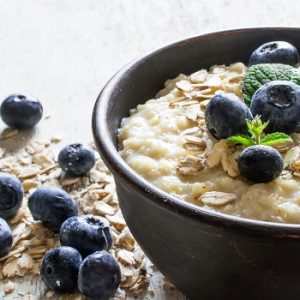Natural Health News — A diet rich in fruit and vegetables can help treat type-2 diabetes by changing the bacteria that live in the gut.
The study, ongoing for the last six years, provides evidence that eating more of the right dietary fibres may rebalance the gut microbiota, or the ecosystem of bacteria in the gastrointestinal tract that help digest food and are important for overall human health.
“Our study lays the foundation and opens the possibility that fibres targeting this group of gut bacteria could eventually become a major part of your diet and your treatment,” said Liping Zhao, the study’s lead author and a professor in the Department of Biochemistry and Microbiology, School of Environmental and Biological Sciences at Rutgers University-New Brunswick.
Type-2 diabetes, one of the most common debilitating diseases, develops when the pancreas makes too little insulin – a hormone that helps glucose enter cells for use as energy – or the body doesn’t use insulin well.
Recent research led by Zhao and colleagues, published in the journal Science, suggests that while many previous studies have shown that increasing dietary fibre intake could alleviate type-2 diabetes, the mechanism has not been well understood or explored.
What is known is that in the gut, many bacteria break down carbohydrates, such as dietary fibres, and produce short-chain fatty acids that nourish our gut lining cells, reduce inflammation and help control appetite. A shortage of short-chain fatty acids has been associated with type-2 diabetes and other diseases.
» Previous studies have suggested that a higher fibre diet can benefit those with type-2 diabetes – though the mechanism is poorly understood.
» A small trial with Chinese patients showed that a diverse high fibre diet boosted numbers of short-chain fatty acid producing bacteria in the gut.
» This change led to increased insulin production, better blood glucose control, and greater weight loss leading the researchers to conclude that establishing a healthy gut microbiota could greatly benefit those with type-2 diabetes.
Rebalancing the gut
For this small trial, Zhao and colleagues randomly assigned a Chinese participants with type-2 diabetes into two groups. The control group received standard patient education and dietary recommendations. The treatment group was given a large amount of many types of dietary fibres while ingesting a similar diet for energy and major nutrients. Both groups took the drug acarbose to help control blood glucose.
The high-fibre diet included whole grains, traditional Chinese medicinal foods rich in dietary fibres and prebiotics, which promote growth of short-chain fatty acid-producing gut bacteria. After 12 weeks, 89% of those on the high-fibre diets showed signs that their bodies were regulating their blood sugar levels more effectively – compared to 50% of the control group. Those on the high fibre diet also lost more weight.
Surprisingly, of the 141 strains of short-chain fatty acid-producing gut bacteria identified by the team, only 15 are promoted by consuming more fibres and thus are likely to be the key drivers of better health.
Bolstered by the high-fibre diet, they became the dominant strains in the gut after they boosted levels of the short-chain fatty acids butyrate and acetate. These acids created a mildly acidic gut environment that reduced populations of detrimental bacteria and led to increased insulin production and better blood glucose control.
The results of this unique study support establishing a healthy gut microbiota as a new and effective nutritional approach for preventing and managing type-2 diabetes.









